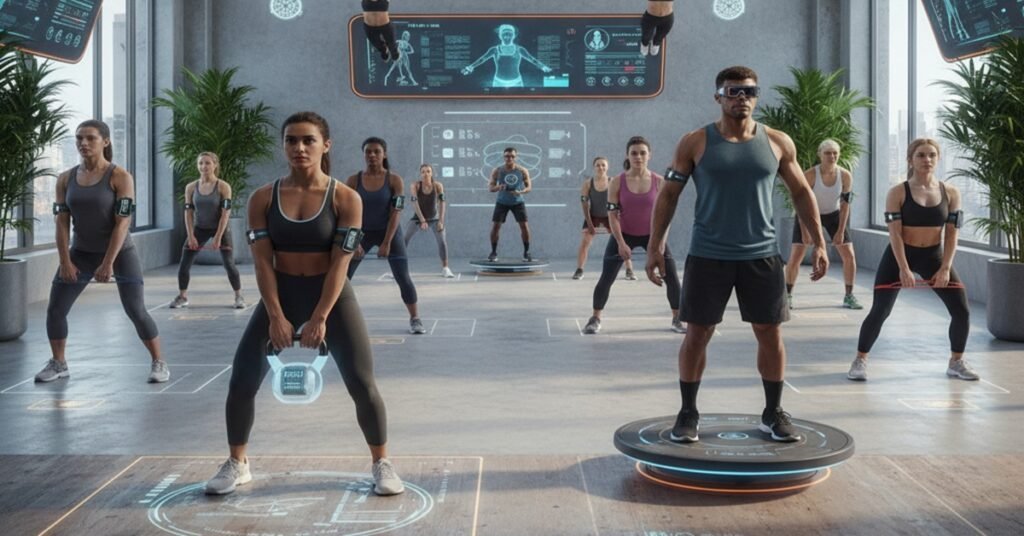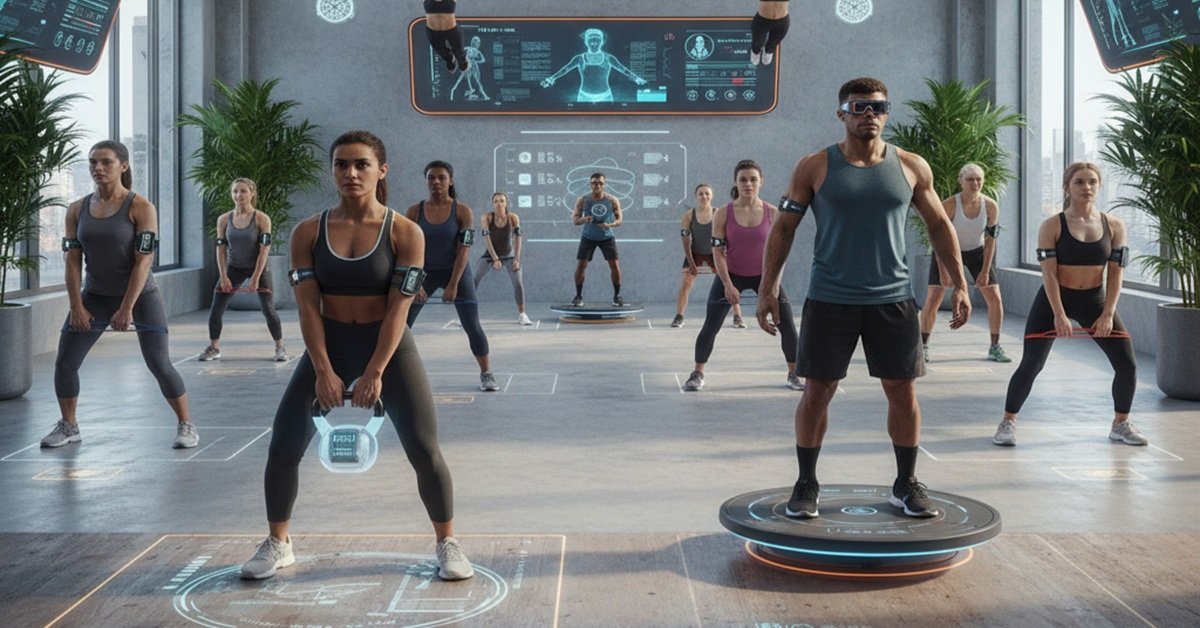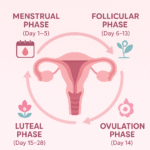In 2026, fitness is no longer just about lifting heavy or running faster — it’s about moving better and living stronger.
People have realized that looking fit doesn’t always mean being functional. That’s why Functional Fitness has become the most powerful global fitness trend of 2026.
Instead of isolating individual muscles, functional workouts train your entire body to move as a connected system — preparing you for daily activities, from carrying bags and climbing stairs to running errands or dancing on weekends.
This evolution reflects a deeper shift: fitness now means practical strength, mobility, and resilience — skills that support real life, not just gym performance.
🧠 What Exactly Is Functional Fitness?
Functional fitness is a training method that emphasizes natural, multi-joint movements mimicking real-world actions.
The goal? Improve mobility, stability, and balance, while reducing the risk of injury.
Unlike bodybuilding or cardio-focused workouts, functional training enhances the movement patterns you use every day.
| 🏋️♂️ Traditional Gym Training | 🤸♀️ Functional Fitness Training |
|---|---|
| Focuses on isolating muscles (e.g., bicep curls) | Focuses on full-body movements (e.g., squats, lunges, push-ups) |
| Uses machines for support | Uses free weights, resistance bands, and bodyweight |
| Goal: aesthetics and muscle size | Goal: performance, balance, and coordination |
| Rigid workout structure | Dynamic, movement-based routines |
| Often repetitive | Constantly varied, adaptable workouts |
👉 Functional fitness = strength that translates into real life.
📜 The Origins of Functional Fitness
Functional training began as rehabilitation therapy in the 1980s. Physical therapists used movement-based exercises to help patients regain strength for daily tasks.
By the 2000s, athletes adopted these principles for performance training — enhancing agility, reaction time, and injury resistance.
In 2026, this approach has gone mainstream, supported by AI-based fitness tech and a growing demand for long-term wellness over short-term transformation.
🔍 Why Functional Fitness Is Exploding in 2026
1. 🏠 Hybrid Lifestyle Revolution
With more people working remotely or hybrid, long sitting hours lead to stiffness, back pain, and low energy.
Functional workouts — using minimal equipment — fit easily into home routines and improve posture, flexibility, and energy levels.
2. 🤖 Smart Tech Integration
Fitness apps and wearables in 2026 analyze not just how many reps you do, but how well you move.
AI sensors now track joint angles, range of motion, and posture alignment, providing real-time corrections.
3. 🧘 Mind-Body Synergy
The trend blends mental wellness and physical health. Workouts now include breathing, balance, and mindfulness elements — improving focus, emotional stability, and stress control.
4. 🌱 Eco & Minimalist Fitness Culture
Minimal equipment, no giant gyms — just your body, a mat, and sometimes nature. Functional fitness supports eco-friendly lifestyles by minimizing energy use and gym dependency.
5. 🧓 Age-Inclusive Fitness
Functional workouts are scalable for all age groups — from teens to seniors. They focus on joint care, stability, and long-term movement health.
🧾 Functional Fitness vs. Traditional Gym Training (2026 Update)
| Feature | Functional Fitness | Traditional Gym Training |
|---|---|---|
| Goal | Everyday performance | Muscle aesthetics |
| Equipment | Bodyweight, kettlebells, resistance bands | Machines, barbells |
| Workout Type | Multi-joint, dynamic | Isolated, static |
| Injury Risk | Low (if form is correct) | Moderate to high |
| Training Space | Small area, home-friendly | Gym or club |
| Adaptability | Scalable for all ages | May not suit seniors or beginners |
| Calorie Burn | Moderate to high | Moderate |
| Mental Benefits | Improves balance, coordination, focus | Focuses mainly on strength |
| Longevity | Sustainable long-term | Can cause burnout or strain |
🔥 Top Functional Fitness Workouts in 2026
Here’s what’s trending in gyms and homes worldwide👇
| 🏋️ Workout Type | 🧩 Description | 💡 Key Benefits |
|---|---|---|
| Kettlebell Flow Circuits | Combines swings, squats, and presses | Builds strength, endurance, and coordination |
| Animal Flow | Ground-based movement inspired by animals | Improves mobility, agility, and flexibility |
| Functional HIIT (F-HIIT) | High-intensity bursts with bodyweight and bands | Burns fat, enhances stamina |
| Mobility + Stability Fusion | Mix of yoga and strength movements | Boosts joint health and range of motion |
| Loaded Carries | Carrying weights (like farmer’s walks) | Strengthens grip and core |
| Core Control Routines | Planks, rotations, stability ball work | Enhances balance and posture |
| Suspension Training (TRX) | Uses suspension straps and bodyweight | Builds strength while protecting joints |
🧘♀️ Key Components of a Functional Fitness Routine
To design a complete functional workout, include the 6 pillars of movement 👇
| ⚙️ Movement Type | 🏋️ Example Exercises | 💪 Primary Focus |
|---|---|---|
| Push | Push-ups, shoulder press | Chest, triceps, shoulders |
| Pull | Pull-ups, rows | Back, biceps |
| Squat | Air squat, goblet squat | Legs, glutes |
| Hinge | Deadlift, hip thrust | Hamstrings, lower back |
| Rotate | Woodchoppers, Russian twists | Core, obliques |
| Carry | Farmer’s walk, suitcase carry | Grip strength, stability |
By combining these movements, you train your entire body for real-life activities.
🧩 Benefits of Functional Fitness
| 💪 Benefit | 🧠 Why It Matters in 2026 |
|---|---|
| Enhanced Mobility | Essential for remote workers and sedentary lifestyles |
| Joint Health | Prevents pain and stiffness due to prolonged sitting |
| Better Balance & Coordination | Reduces risk of falls and injuries |
| Core Strength | Improves posture and spine alignment |
| Energy Efficiency | Uses the body’s natural mechanics |
| Faster Recovery | Functional training promotes circulation and recovery |
| Holistic Health | Connects physical movement with mental well-being |
🕹️ The Role of Technology in Functional Fitness 2026
Technology has made functional training smarter and safer:
| 💡 Tech Innovation | ⚙️ Function | 🚀 Benefit |
|---|---|---|
| AI Motion Analysis | Tracks form and angles | Prevents injury, corrects posture |
| Smart Resistance Bands | Adjust resistance automatically | Personalized intensity |
| Virtual Reality Gyms | Immersive training environments | Boosts motivation |
| Wearable Mobility Trackers | Measure joint flexibility | Helps design balanced routines |
| Recovery Apps | AI-driven stretching and breathing | Promotes relaxation and muscle healing |
The fusion of tech + movement science defines the future of fitness.
🧍♀️ Functional Fitness for Every Age Group
| 👶 Age Group | 🏃♂️ Recommended Focus | ⚙️ Examples |
|---|---|---|
| Teens (15–25) | Agility, coordination, and endurance | Jump squats, planks, agility ladder |
| Adults (25–45) | Core stability, posture correction | Kettlebell swings, TRX rows |
| Midlife (45–60) | Balance and joint mobility | Bodyweight lunges, resistance bands |
| Seniors (60+) | Flexibility, fall prevention | Chair squats, light dumbbell presses |
Functional training scales perfectly — no matter your fitness level.
🧭 Designing Your Own Functional Fitness Plan
Here’s a sample weekly structure for beginners to intermediate level:
| 📅 Day | 🧩 Workout Type | ⏱️ Duration | 💪 Goal |
|---|---|---|---|
| Monday | Mobility & Activation | 30 mins | Loosen muscles and prepare joints |
| Tuesday | Strength Circuit | 45 mins | Build full-body power |
| Wednesday | Core & Balance | 25 mins | Improve stability |
| Thursday | Functional HIIT | 40 mins | Burn fat, boost endurance |
| Friday | Mobility + Yoga Flow | 30 mins | Recovery and flexibility |
| Saturday | Outdoor Functional Fun (hiking, cycling) | 60 mins | Real-life application |
| Sunday | Rest or light stretch | 20 mins | Recovery |
🧘 Mind-Body Connection: The Secret Power
Functional training encourages mindfulness.
Each move demands focus — your body and brain must work in sync.
That’s why it’s often used as a stress management tool.
Practices like breathwork, slow movement, and body awareness have proven to:
- Reduce cortisol (stress hormone)
- Enhance concentration
- Improve emotional balance
In 2026, many fitness studios now offer “Functional Flow” — combining yoga, strength, and mindfulness in one session.
👩🏫 Expert Advice for Beginners
| 🧠 Tip | 📋 Details |
|---|---|
| Start with bodyweight | Master your form before adding resistance |
| Focus on compound moves | Use exercises that activate multiple muscle groups |
| Warm up dynamically | Avoid static stretching; move your joints actively |
| Prioritize recovery | Sleep, hydration, and stretching matter as much as training |
| Track progress, not perfection | Measure balance, endurance, or posture — not just weight |
| Stay consistent | 3–4 sessions per week build visible strength and mobility |
🏅 Real-Life Case Studies
📍Case 1: Corporate Functional Breaks (USA)
A California tech firm introduced 15-minute functional sessions thrice a week.
➡ Employees reported 40% less back pain and 20% higher productivity.
📍Case 2: Senior Wellness Program (Japan)
Residents in a Tokyo senior community practiced daily chair squats and band pulls.
➡ Fall incidents dropped by 35% in 6 months.
📍Case 3: Home Fitness Moms (India)
Busy mothers incorporated functional home workouts using resistance bands.
➡ Reported improved energy, posture, and confidence without gym access.
🌍 Global Functional Fitness Trends for 2026
| 🌐 Region | 🔥 Popular Trend | 🧩 Unique Insight |
|---|---|---|
| USA & Canada | Tech-driven home training | AI posture tracking & smart mirrors |
| Europe | Outdoor movement clubs | Community-based training |
| Asia-Pacific | Compact home gyms | Space-saving functional kits |
| Middle East | Functional luxury gyms | AI-powered recovery pods |
| India | Hybrid yoga-functional workouts | Fusion of tradition & technology |
📊 Future of Functional Fitness: 2026–2030
| 📅 Year | 🔮 Projected Trend | ⚙️ Impact |
|---|---|---|
| 2026 | AI-integrated workouts | Personalized movement correction |
| 2027 | AR-based fitness coaching | Immersive visual feedback |
| 2028 | Data-driven recovery programs | Faster performance gains |
| 2029 | Fully hybrid ecosystems | Home + gym combo fitness |
| 2030 | Longevity-focused training | Exercise for healthy aging |
💬 FAQs
Q1: Is functional fitness suitable for beginners?
✅ Absolutely! You can start with simple bodyweight exercises and gradually add resistance.
Q2: Do I need special equipment?
No. A yoga mat, kettlebell, and resistance bands are enough to begin.
Q3: How is it different from CrossFit?
Functional fitness focuses on everyday movements and longevity, while CrossFit emphasizes performance and competition.
Q4: Can I lose weight with functional training?
Yes — especially with high-intensity circuits and consistent nutrition.
Q5: How long before I see results?
Most people notice improved mobility and energy within 3–4 weeks of consistent training.
🚀 Conclusion: Fitness That Fits Real Life
Functional fitness in 2026 isn’t just a workout — it’s a lifestyle upgrade.
It teaches your body to move the way it was designed to — strong, flexible, and resilient.
As AI, sustainability, and mindfulness shape the fitness world, functional training stands out as the perfect balance between technology and human movement.
Whether you’re an athlete, office worker, or senior — functional fitness fits your life.









